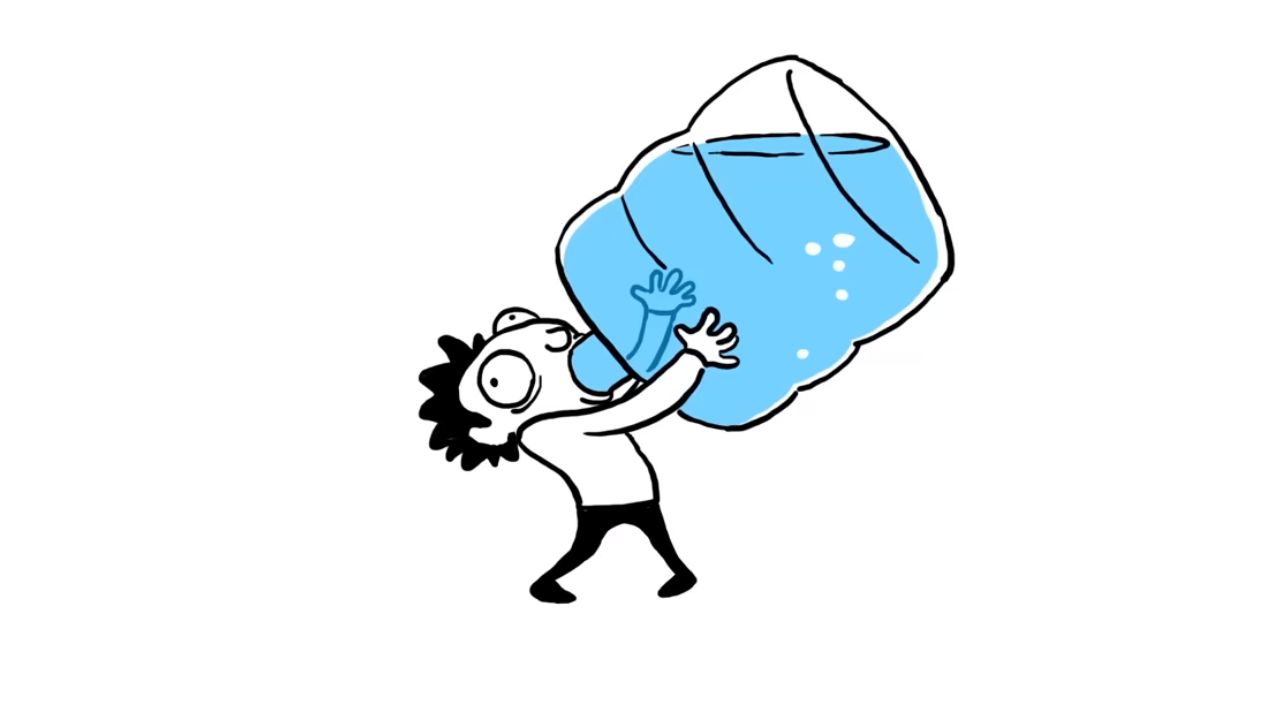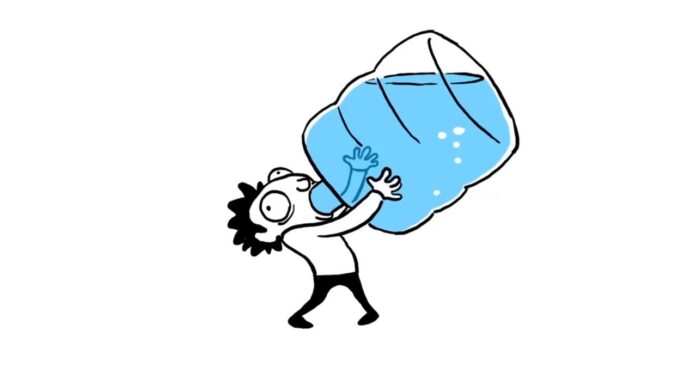Water is a precious resource that is essential for life. However, not all countries are created equal when it comes to water consumption. Some countries use a lot more water than others. In this article, we’ll explore the countries with highest water consumption in the world, delving into the top 20 nations where water usage is particularly significant.
Challenges posed by a growing global population, which is expected to reach between 9 and 10 billion by mid-century, and its implications for ensuring food security. Agriculture, as the largest consumer of water, accounts for a substantial portion of global freshwater usage, ranging from 75% to 90%. Notably, in countries like India, Iran, Pakistan, Thailand, and Vietnam, over 90% of freshwater is dedicated to agricultural purposes. On average, water usage for agriculture stands at 41% for high-income nations, 79% for middle-income countries, and a staggering 90% for low-income nations.
Read More: Largest Exporters of Blueberries in the World
The global water industry plays a pivotal role in providing essential services to communities, industries, and agricultural sectors worldwide. Industrially, 17% of total water consumption is directed towards industrial purposes. High-income countries predominantly dominate water usage for industrial processes, unlike the significant agricultural water use in low-income countries. Leading the pack is the United States (US), which annually consumes 300 billion cubic meters (m3) of water for industrial needs, making it the largest industrial water consumer globally. China closely follows as the second-largest user, utilizing 140 billion m3 of water for industrial purposes. Japan and Mexico also feature among the top 10 countries with the highest water consumption for industrial activities.
A report by Allied Market Research projects substantial growth in the global process water treatment market, with estimates rising from $263.1 billion in 2020 to $520.4 billion by 2030, showcasing a compound annual growth rate (CAGR) of 7.0%. Process water, integral to manufacturing operations such as cooling tower makeup water and coating and plating, is a key driver of this growth. The industrial sector’s demand for clean water and stringent wastewater discharge regulations underpin this anticipated expansion.

Water consumption patterns per capita exhibit considerable regional variations due to multifaceted factors. Presently, global annual water consumption hovers around 4 trillion m3. Members of the Organization of Economic Co-operation and Development (OECD) collectively account for 20% to 25% of global freshwater usage, while BRICS countries (Brazil, Russia, India, China, and South Africa) consume nearly 45% of the world’s freshwater. Surprisingly, despite the widespread assumption that water is primarily used for domestic purposes, only 11% of global water is allocated to municipal or domestic use. Notably, China leads in domestic water consumption, utilizing over 70 billion m3 annually for activities like cleaning, cooking, drinking, and washing. The United States also ranks high as one of the world’s top consumers of water for domestic use, with substantial per capita water usage. North America dominates the global drinking water market, with steady growth recorded in bottled water consumption over the years. Key players in this market include The Coca-Cola Company (NYSE:KO), PepsiCo, Inc. (NASDAQ:PEP), and Nestlé S.A. (OTC:NSRGY).
Read Also: Countries With Highest Tea Consumption
These dynamics underscore the critical importance of water management, sustainable practices, and regulatory compliance in a world where water resources are both finite and essential for life and industry.
Our Approach
In our quest to identify the countries with the highest water consumption, we turned to AQUASTAT, a comprehensive global information system dedicated to water resources and agricultural water management under the Food and Agriculture Organization of the United Nations (FAO). This valuable resource provided us with the latest data on annual water consumption, specifically the total water withdrawals encompassing agricultural, domestic, and industrial sectors for the year 2020.
With this data in hand, we meticulously ranked the countries in ascending order based on their annual water consumption. The result: a curated list of the top 20 countries whose water consumption stands out on the global stage. These select nations collectively account for nearly 80% of the world’s total water consumption, underscoring their significant role in global water utilization trends.
Countries with Highest Water Consumption in the World
1. India
Annual Water Consumption: 761 billion m3
India, a nation characterized by its immense population and a wide array of geographic regions, grapples with substantial water management challenges. These complexities arise from several key factors, including rapid population growth, climate variability, and the pervasive issue of water pollution. India’s water landscape is punctuated by major rivers, including the Ganges, Brahmaputra, Yamuna, and Godavari, which serve as crucial sources of water supply. Additionally, India experiences a monsoonal climate, where seasonal rainfall patterns play a pivotal role in determining the availability of water resources.
2. China
Annual Water Consumption: 581.29 billion m3
China boasts a expansive agricultural sector, a critical cornerstone of its economy, which demands substantial water resources, particularly for irrigation purposes. Within its vast landscape, China is graced with several major rivers, including the Yangtze, Yellow River, Pearl River, and Huai River, all of which play pivotal roles in the country’s water supply. Additionally, China is dotted with numerous lakes such as Lake Poyang, Dongting Lake, and Taihu Lake, contributing significantly to its water resources. Furthermore, beneath the earth’s surface, China possesses extensive aquifers that serve as vital reservoirs for groundwater storage.
3. USA
Annual Water Consumption: 444.29 billion m3
The United States relies on a diverse range of water sources to meet its water needs. These sources include rivers, lakes, reservoirs, and streams, all of which contribute significantly to the country’s freshwater supply. In some coastal regions, specialized desalination plants come into play. These plants play a crucial role in treating seawater, transforming it into freshwater suitable for drinking and various other essential uses.
Additionally, water finds application in the cooling processes of thermoelectric power plants scattered across the nation. These power plants, which generate electricity from various fuel sources like coal, natural gas, and nuclear energy, depend on water for cooling purposes, underlining the multifaceted role of water in the energy sector.
4. Indonesia
Annual Water Consumption: 222.64 billion m3
Indonesia, situated in the heart of Southeast Asia, is blessed with a wealth of water resources that play a vital role in the nation’s ecosystem. These resources encompass a network of rivers, expansive lakes, and underground groundwater reservoirs. Among its impressive array of rivers, Indonesia boasts major ones like the Kapuas, Mahakam, and Barito, which not only contribute to the country’s water abundance but also hold significant ecological and cultural importance.
5. Pakistan
Annual Water Consumption: 183.45 billion m3
Situated in South Asia, Pakistan stands as an agrarian nation endowed with a diverse array of water resources. Yet, it confronts pressing challenges associated with limited access to clean water and the need for more effective water management practices. Pakistan’s economy leans heavily on agriculture, and this sector stands out as the largest consumer of water within the country.
6. Iran
Annual Water Consumption: 93.3 billion m3
Iran, nestled in the heart of the Middle East, grapples with the distinctive feature of arid and semi-arid regions, elevating the importance of effective water management within the country. In the context of Iran, agriculture emerges as the predominant consumer of water resources, emphasizing the critical role of efficient water usage in sustaining the nation’s agricultural sector.
7. Mexico
Annual Water Consumption: 89.55 billion m3
Mexico, situated in North America, boasts a rich tapestry of water resources that form a critical part of its natural landscape. Nevertheless, Mexico grapples with a set of challenges that include issues of water scarcity, pollution concerns, and the need for improved access to clean water in specific regions. Among its notable water features are significant rivers like the Rio Grande, Lerma, and Grijalva, each playing a distinct role in Mexico’s water ecosystem. Lakes such as Lake Chapala, the partially drained Lake Texcoco, and Lake Cuitzeo further contribute to the nation’s intricate water supply network.
8. Philippines
Annual Water Consumption: 85.87 billion m3
The Philippines, an enchanting archipelago nestled in Southeast Asia, encounters a series of water management challenges aggravated by its burgeoning population and distinctive geographical traits. This vibrant nation relies on an array of vital rivers, with notable names like the Cagayan River, Pampanga River, and Agusan River coursing through its landscapes. Additionally, the Philippines benefits from the presence of serene lakes, including Laguna de Bay and Lake Lanao, which play pivotal roles in sustaining the country’s precious water resources. These factors collectively underscore the significance of effective water management and access to clean water in the Philippines.
9. Vietnam
Annual Water Consumption: 82.03 billion m3
Vietnam, nestled in the vibrant tapestry of Southeast Asia, boasts a multitude of water resources that form the lifeblood of its landscapes. However, the nation grapples with a complex array of water management challenges, stemming from factors such as rapid population growth, burgeoning industrial development, and the ever-pressing influence of climate change. Vietnam’s waterways weave a rich tapestry, with a network of significant rivers, including the iconic Red River (Song Hong), the majestic Mekong River (Song Cuu Long), and the meandering Dong Nai River. These watercourses are central to Vietnam’s vitality, highlighting the need for effective water resource management in the face of evolving environmental and demographic pressures.
10. Japan
Annual Water Consumption: 78.4 billion m3
Japan, nestled in the heart of East Asia, relies significantly on its network of rivers as a cornerstone of its water supply. Among these vital waterways, the Shinano, Tone, Kiso, and Yoshino Rivers hold special prominence, playing pivotal roles in ensuring Japan’s water resources. Additionally, the country benefits from a plethora of lakes and reservoirs that serve as essential water sources. Notable names in this aquatic lineup include Lake Biwa, Lake Kasumigaura, and Lake Inawashiro, among others. These natural assets underscore Japan’s commitment to sustainable water management and conservation.
11. Egypt
Annual Water Consumption: 77.5 billion m3
Egypt, a nation predominantly characterized by arid desert landscapes, grapples with the formidable challenge of water management owing to its limited water resources. Central to Egypt’s water supply is the iconic River Nile, which serves as a lifeline for the nation. Flowing from the southern reaches to the northern expanse, the Nile is not only Egypt’s primary source of water but also stands as the longest river on the planet. This makes it an indispensable asset in sustaining the country’s water needs amid the arid and challenging climate of Egypt.
12. Brazil
Annual Water Consumption: 67.2 billion m3
Brazil, a nation known for its expansive and ecologically diverse landscapes, harbors vast wetland ecosystems, including the renowned Pantanal and the Amazon Basin. These ecosystems play multifaceted roles as crucial water sources and natural reservoirs. Beyond their pivotal functions in regulating water flow and providing habitats for a plethora of species, these wetlands also contribute significantly to the overall water balance in the region. In tandem with these natural wonders, Brazil relies on a network of reservoirs and dams, exemplified by prominent structures like the Itaipu Dam and the Sobradinho Reservoir, to augment its water resources.
Moreover, Brazil stands as a noteworthy player in the global drinking water market, with the presence of renowned companies such as The Coca-Cola Company (NYSE:KO), PepsiCo, Inc. (NASDAQ:PEP), and Nestlé S.A. (OTC:NSRGY). These global giants operate within the country, further shaping the landscape of Brazil’s water-related endeavors.
13. Russia
Annual Water Consumption: 64.82 billion m3
Russia, famed for its expansive and intricate web of rivers and lakes, boasts a wealth of natural water resources. Within its borders, one can encounter major rivers like the Volga, Lena, Yenisei, and Ob, as well as vast lakes like Lake Baikal and Lake Ladoga. Water, a fundamental element, assumes a pivotal role in Russia’s energy landscape. The country harnesses the energy of flowing water through a network of hydroelectric power plants, effectively converting the force of water into the electricity that powers homes and industries. This symbiotic relationship between Russia and its abundant water resources underscores the nation’s reliance on hydroelectricity for sustainable power generation.
14. Turkiye
Annual Water Consumption: 62.21 billion m3
Turkey, with its diverse landscapes and geographical tapestry, boasts a plethora of major rivers that crisscross its terrain. Among these significant waterways are the Euphrates, Tigris, Sakarya, and Kızılırmak rivers, each contributing substantially to the country’s water resources. These rivers, originating from both within Turkey and neighboring nations, collectively provide a substantial volume of surface water that sustains various aspects of life.
Furthermore, rainfall emerges as another vital source of water in Turkey, especially in regions characterized by high precipitation. This dynamic interplay of natural resources underscores Turkey’s reliance on its rivers and rainfall to meet its water needs, shaping the country’s water management strategies and practices.
15. Uzbekistan
Annual Water Consumption: 58.9 billion m3
Uzbekistan, a nation with diverse landscapes, finds itself intersected by the Amu Darya and Syr Darya rivers, serving as the primary reservoirs of freshwater in the region. These rivers play an indispensable role in providing the essential water resources needed to support various aspects of life within the country.
Moreover, in the mountainous terrain of regions like the Tian Shan and Pamir-Alai ranges, the natural phenomenon of melting snow and glacial runoff significantly augments the availability of water in rivers and streams. This harmonious interaction of freshwater sources, from flowing rivers to mountain-born runoff, shapes Uzbekistan’s intricate water ecosystem, enabling sustainable water management in the region.
16. Thailand
Annual Water Consumption: 57.31 billion m3
Thailand, renowned for its intricate waterways, boasts an expansive network of rivers that crisscross its diverse terrain. Among these notable rivers are the Chao Phraya, Mekong, and Ping Rivers, each contributing substantially to the nation’s water resources and playing pivotal roles in various aspects of life.
In addition to its surface water, Thailand also relies on groundwater resources, which hold a crucial place in the country’s water supply. Deep within the earth’s crust, aquifers serve as natural reservoirs that store water, which is then extracted through wells and pumps. This groundwater resource proves to be a significant source of water for essential sectors such as agriculture and rural communities, especially in regions where surface water availability may be limited. This intricate balance between surface and groundwater sources underscores Thailand’s reliance on a multifaceted water ecosystem to meet its diverse water needs.
17. Iraq
Annual Water Consumption: 56.62 billion m3
Iraq grapples with a pressing challenge related to water scarcity, primarily attributed to its arid and semi-arid climate, coupled with limited water resources and a steadily increasing population. In this context, the Tigris and Euphrates Rivers emerge as the lifelines of the country. These vital watercourses originate beyond Iraq’s borders and flow through its territory, serving as the primary sources of surface water. Their precious waters are harnessed for a myriad of purposes, underlining their significance in sustaining various facets of life within Iraq.
18. Peru
Annual Water Consumption: 38.55 billion m3
Peru, blessed with a vast and intricate network of rivers, boasts an abundance of aquatic resources that enrich its landscapes. Among the notable rivers that crisscross this South American nation are the Amazon, Ucayali, Marañón, and Huallaga Rivers, each contributing significantly to the country’s surface water resources. Of particular significance is the mighty Amazon River, a true giant among rivers and one of the largest in the world. It assumes a pivotal role in ensuring water availability across Peru, influencing various aspects of life and ecosystems within the country.
19. Argentina
Annual Water Consumption: 37.78 billion m3
Argentina, a land of diverse landscapes and abundant natural resources, draws its water sustenance from a rich array of sources. At the heart of its water wealth lies an expansive network of rivers, with the Paraguay and Paraná rivers assuming paramount significance. These mighty waterways, in tandem with their meandering tributaries, generously bestow upon the nation a substantial volume of surface water. This vital aquatic resource finds utility in an array of applications, including the provision of potable water, support for extensive irrigation practices, and the facilitation of industrial processes. Argentina’s multifaceted water sources form the cornerstone of its water supply, shaping the life and livelihoods of its populace.
20. Canada
Annual Water Consumption: 36.23 billion m3
Canada, known for its pristine landscapes and natural beauty, places a strong emphasis on the responsible management of its water resources. At the core of its water supply lie renewable sources that include expansive lakes, meandering rivers, and vital groundwater reservoirs. These resources are vigilantly overseen to uphold sustainable water management practices, ensuring their availability for generations to come.
In a remarkable feat, Canada holds an astonishing 20% of the world’s freshwater reserves, a testament to its rich aquatic endowment. While the nation utilizes water for an array of purposes, residential consumption accounts for a modest 10% of the total water usage in Canada. This mindful approach to water stewardship underscores the country’s commitment to preserving its precious natural heritage.


















![10 Countries With the Best Healthcare in the World [Statistical Analysis] Countries With the Best Healthcare in the World](https://articleify.com/wp-content/uploads/2025/07/Countries-With-the-Best-Healthcare-in-the-World-1-150x150.jpg)










